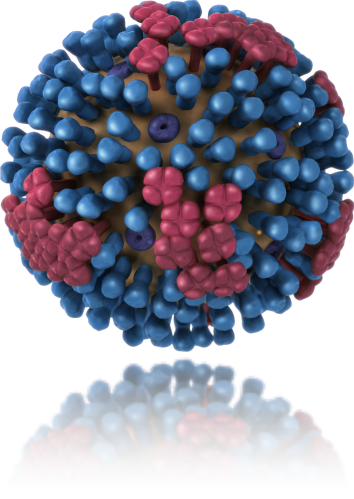Description
Influenza is one of the most common, and serious, respiratory infections of humans, with 3 to 5 million cases occurring annually worldwide, resulting in 250,000 to 500,000 deaths. Of the three types of influenza virus, those assigned to type A are the most virulent, and are associated with seasonal (winter) epidemics in temperate regions, year long transmission in the tropics, and occasional large-scale global pandemics that are characterized by substantial increases in morbidity and mortality. Whilst the adaptive interaction between the haemagglutinin (HA) protein of influenza A virus and the host immune system, 'antigenic drift', is one of the best described patterns in molecular evolution, studies have largely focused on the HA in isolation. Little attention has been paid to evolutionary dynamics at the genomic level, particularly the relationship between natural selection, reassortment, and the functional interactions among segments. This project involves the development and application of state-of-the-art computational techniques to analyse genomic sequences of IVA sampled globally over time. The aim is to investigate the rate of molecular evolution, the degree of selection acting on the genomic segments, the interactions between the segments and the rate of genetic exchange and to characterize the relative importance of these forces to the evolutionary dynamics of this important human virus.
Funding:
 |
 |
 |
 |
The Human/Swine A/H1N1 Influenza analysis site can be found here: http://tree.bio.ed.ac.uk/groups/influenza



